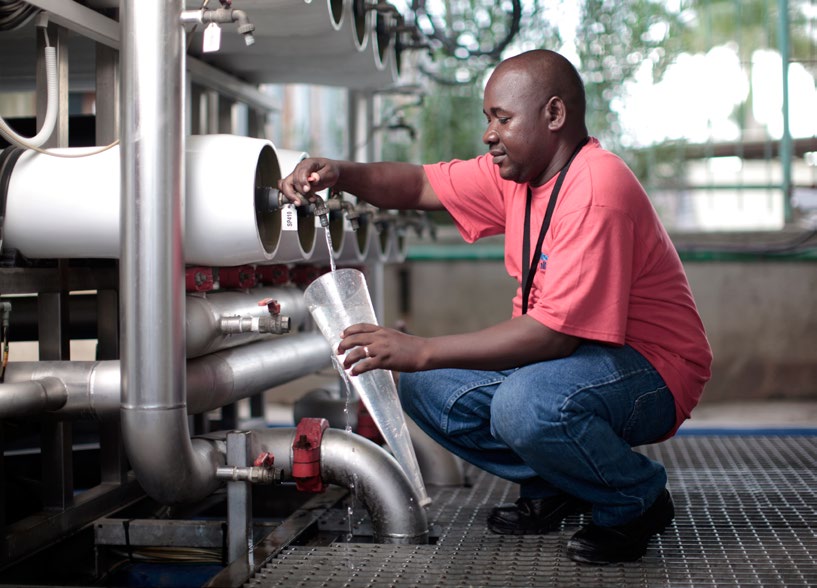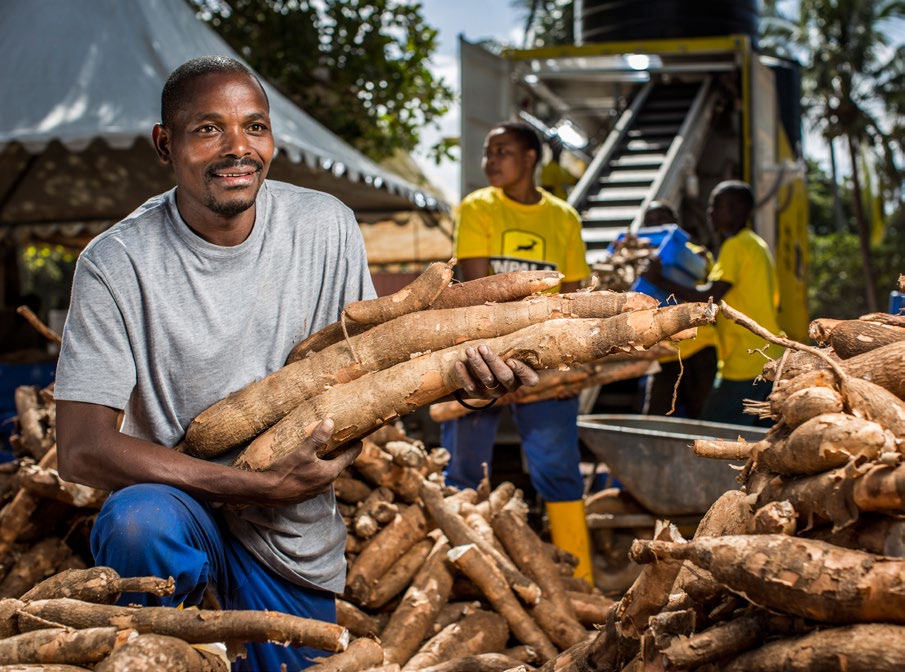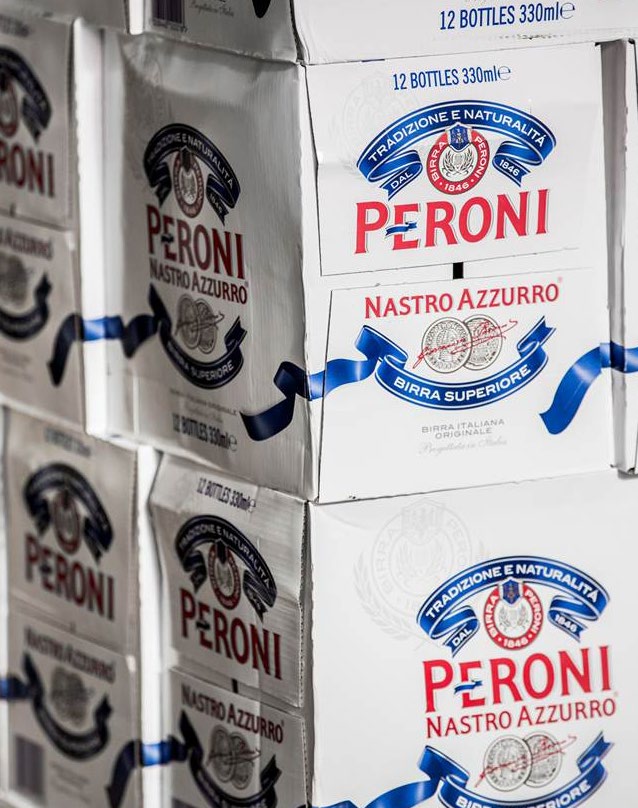Alan Clark, chief executive of brewing giant SABMiller, has unveiled a new sustainable development plan, but insists it’s evolution not revolution
“The chief strategist of an organisation has to be the leader – the CEO.” So runs the advice of the Harvard management guru Michael Porter. SABMiller appears to be putting the theory to test. The world’s second largest brewer has a new chief executive: South Africa-born Alan Clark.
And, lo and behold, it has a new sustainability strategy too. “SABMiller Prosper” maps out the direction of travel for the UK-listed firm’s sustainable development efforts through to 2020. The new strategy centres on five core themes: entrepreneurship, energy and climate, responsible drinking, water and land use.
Exacting targets are attached to each theme. Clark is adamant that the strategy is not the whim of a new chief executive. For one thing, he’s been in post for more than a year – long enough to get the full measure of the issues at stake. Second, Clark is no maverick. Astute and measured, the soft-spoken South African has held the post of managing director for Europe, then chief operating officer, before gaining the top job.
Sharper focus
So what does this new-look strategy signify? Clark calls it a “strategic evolution”, not a new direction. He says: “In any business, including ours, you would review the overall business strategy and core elements within that strategy from time to time. So it’s about getting a much more focused, deliberate attention from the organisation to say ‘this is what we need to prioritise going forward’.”
So no volte face, then. That makes sense. After all, SABMiller is not a sustainability newbie. Its previous sustainability strategy, which covered 10 focus areas, has run for almost a decade. And the company has been making a “steady improvement” since then, Clark insists.
Results bear that out. The company’s total energy use has dropped from 26 petajoules (quadrillion joules) per annum 10 years ago to 21 petajoules per annum now, for instance. Over the same period, the average amount of water required to manufacture a litre of beer has dropped from 4.6 litres to 3.5 litres.
The strategic “refresh” (Clark’s other preferred term for the new approach) will inevitably see some issues taken off the priority list. Explicit commitments to HIV/Aids, human rights, packaging and transparency, for instance, have gone. But Clark insists these have been subsumed within the new quintet of principles, rather than eradicated. Commercial logic Clark’s preference not to overhaul SABMiller’s broad approach is testimony to the commercial logic behind the company’s sustainability story to date.
The company is unabashed about the “very specific self-interest” of pursuing its sustainability principles. Cutting energy use might help the climate, but Clark stresses the savings it accrues for the bottom line. Returnable bottles work in a similar way – not only are they environmentally friendly, but they also happen to be the most cost effective solution for beer distribution. The list goes on. Geography has a big part to play in SABMiller’s business-focused approach to sustainability.
The company’s culture was forged in the developing world, with all the attendant resource constraints and socio-economic challenges. Although it now operates in more than 80 countries, about 70% of its revenues and profits are still generated in emerging markets.
“There’s a natural recognition of the role that you need to play as a business and the contribution that you need to make,” Clark says, in reference to the company’s dominant presence in the developing world. The need to be seen as locally rooted fits with the firm’s overall business strategy.
While SABMiller boasts a handful of genuinely global brands such as Grolsch and Miller Lite, it isn’t a mono-brand monster like Carlsberg or Heineken. Of its 200 or so brands, the vast majority cater to a specific national or even regional clientele. Examples include Cusqeña (named after the city of Cuzco, Peru) and Kilimanjaro Lager (from the eponymous region of Tanzania).
“Consumers throughout the world believe that their country produces the best beer in the world,” Clark observes. “And because beer is a local business, our connection with those communities is important.”

Interdependence
Another major driver of SABMiller’s localisation strategy – what Clark calls “securing our place in society” – revolves around resource interdependence. Water is top of the list. SABMiller has 85 breweries around the world, all of which require reliable sources of clean water. Drought, pollution or simple over-demand can put such supply at risk.
SABMiller has put water management high on its agenda over recent years. Working with conservation groups such as the Nature Conservancy and WWF, it has undertaken extensive assessment of more than two dozen key breweries to better understand their vulnerability to water-related risks. Under the aegis of this flagship Water Futures programme, the company is also pioneering multi-party approaches to water stewardship. “It’s very important that we have access to clean water – and good quality water – for our brewing. But it’s also important that we’re seen to make a contribution to the protection of water resources and the development of water resources,” Clark explains.
A similar dynamic plays out in agriculture. As a brewer, SABMiller is heavily dependent on malt obtained from barley. With Africa’s population of 1.1 billion set to more than double between now and 2050, pressure on land use will inevitably increase. Clark doesn’t want to be accused of using productive land to make beer while local people go hungry. At a more general level, securing the company’s place in society translates to meeting public expectations.
Today, that means acting responsibly. As large users of energy, global corporations are expected by consumers to be acting to reduce their carbon footprints. The same goes for cutting waste or battling poverty through the promotion of entrepreneurship. Expectations on controversial industries are all the higher. SABMiller’s status as a global brewer puts it in the firing line. In 2012, the company worked with the World Health Organization and the business-led Global Alcohol Producers Group to help produce a set of measurable commitments to reduce harmful drinking.
Clark knows his firm will have regulators snapping at his heels if the company breaches its pledge to continue with its responsible drinking efforts. SABMiller’s new chief executive insists “responsible consumption” will be a hallmark of his leadership. He intends to build the company’s “knowledge of what works, what is most effective [and] who are the agencies with whom we can partner”.

Shift in style
Clark’s leadership might not mark a huge departure in substance, but it could open the door to a subtle shift in style. Again, don’t expect anything radical. The global brewer will continue to promote self-policing over mandatory legislation, for instance.
Working through bilateral and multilateral partnerships, rather than unilateral initiatives, will remain the name of the game. And regular measurement against transparent targets will carry on as before. Clark isn’t about to pull the plug on the company’s current portfolio of sustainability projects, but admits that some may “evolve over time”. He says: “We might add new partnerships or supplement them. We might develop partnerships in countries where we don’t have them yet.”
The Water Futures programme, for example, currently operates in only eight pilot markets. The new chief is open to increasing participation with industry competitors. In addition to responsible drinking, he sees packaging design, packaging legislation, recycling and the promotion of returnable bottles as areas of possible collaboration. In keeping with SABMiller’s local brand focus, Clark is comfortable with a degree of flexibility when it comes to implementation. Not that the new strategy is an “opt-in”, he is quick to point out.
Whether it’s the Czech Republic or Peru, a shared focus among all the company’s 70,000 employees is expected. Yet he accepts that “a level of customisation” will occur from one market to another. “If you went country-by-country, you would not see the five imperatives being applied in the same way in every country, but you’d see elements of them and a consideration [of them]”, he says. He gives the example of Mozambique, where subsistence farming is an everyday reality and where support for small farmers is therefore critical.
“That wouldn’t be the same in Slovakia.” But good practices in one market need to be rolled out elsewhere if SABMiller is to hit its new 2020 ambitions. Clark cites the company’s hugely successful Tenderos programme in Latin America, which has so far offered training and finance to more than 40,000 shop owners. In total, the company has pledged to support 500,000 small businesses by the end of the decade. “We’re not going to achieve that in Latin America alone,” Clark says frankly.
A greater focus on SABMiller’s indirect as well as direct impacts can be expected. According to independent research, the brewer generates economic benefits for about 750,000 people in Africa. Most of these work in the company’s supply chain.
That contrasts with the brewer’s relatively small base of 13,000 direct employees on the continent. Maximising these knock-on effects features high on Clark’s wish list.

Conclusion
Some may be disappointed to learn that the world’s second largest brewer – only Anheuser-Busch InBev is bigger – has not overhauled its sustainability strategy. Others will commend Clark for largely sticking with an approach that is delivering demonstrable results. The reality is that SABMiller’s new chief executive could have chosen to sit back and alter nothing. By his own admission, most of the critical sustainability issues facing the company – access to water, security of supply, competition over land use – have not reached crisis point yet.
“You could probably manage them in the immediate timeframe,” he says. “But we’re talking 10, 20, 30 years. That’s the view we have of our organisation and that’s the level of protection we need.” Clark’s decision to focus on the long-term horizon bucks the trend among many chief executives, who, as with politicians, care about their own tenure and little else. Likewise, he eschews the other C-Suite trait of shaking up everything to show that a new man has arrived.
Clark has the foresight and modesty to know that SABMiller’s sustainability strategy is, though not perfect, broadly on track. He has judged that a refresh and refocus is what is needed, not a wholesale rewrite. To quote Harvard’s Michael Porter again: “Strategy must have continuity. It can’t be constantly reinvented.” In Clark, he has the model student.
Five Pillars – SABMiller Ambition
Strategy
1) A Thriving World: Shared Imperative: where incomes and quality of life are growing.
2) A Sociable World: Shared Imperative: where SABMiller beers are developed, marketed, sold and consumed with high regard for individual and community well-being
3) A Resilient World: Shared Imperative: where SABMiller businesses, local communities and ecosystems share uninterrupted access to safe, clean water.
4) A Clean World: Shared Imperative: where nothing goes to waste and emissions are dramatically lower.
5) A Productive World: Shared
Imperative: where land is used responsibly, food supply is secure, biodiversity is protected and SABMiller crops can be accessed
SABMiller Key Facts 2013/2014
Employees: 70,000
Net revenue: $26.7bn
Total sales: 24.5bn litres
Water use per litre beer produced: 3.5 litres
Carbon footprint: 10.3kg carbon dioxide equivalent per 100 litres of beer (based on fossil fuel use in manufacturing facilities)
Beer Brands: 200+ (including Peroni Nastro Azzurro, Pilsner Urquell, Miller Genuine Draft and Grolsch)
alcohol food and drink global CR strategy SABMiller sustainability strategySeptember 2014, London
A celebration of sustainability and CSR best practice from around the world

